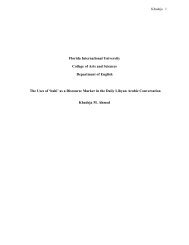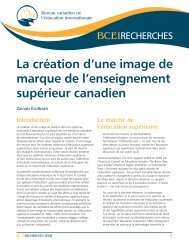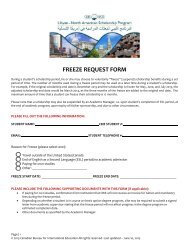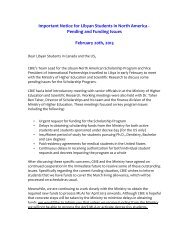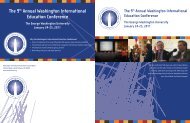Electrical Machines and Equipment
Electrical Machines and Equipment
Electrical Machines and Equipment
You also want an ePaper? Increase the reach of your titles
YUMPU automatically turns print PDFs into web optimized ePapers that Google loves.
<strong>Electrical</strong> Technology Department<strong>Electrical</strong> <strong>Machines</strong> & <strong>Equipment</strong>sDepartment <strong>Electrical</strong> Technology MajorCourse NamePrerequisitesElectronic Control of<strong>Electrical</strong> <strong>Machines</strong><strong>Electrical</strong> <strong>Machines</strong>& <strong>Equipment</strong>Course Code ELT 216Power ElectronicsTrimester 5Course Description:Credit Hours 4The course contains a description of using power electroniccircuits for operation <strong>and</strong> control of different electrical (DC & Contact L 3AC) motors at different operating conditions.Hours P 2(h/w) TGeneral objective of the course:The aim of the course is to train the trainees in the fundamentals of electronic control of DC <strong>and</strong>AC motors using power electronic circuits. This course also aims to enable the trainees to operate <strong>and</strong>control the motors at different operating conditions.Behavioral Objectives:The trainees should be able to:1. Select the proper converter circuit needed for the motor <strong>and</strong> the operatingconditions.2. Determine the average values of the voltages <strong>and</strong> current in controlledrectifier circuits.3. Determine the RMS values of the voltages <strong>and</strong> current in AC voltagecontroller circuits.4. Explain the performance of basic inverter circuits.5. Operate <strong>and</strong> control DC motors using DC choppers.6. Operate electrical motors using power electronic circuits.7. Explain the characteristics of different electrical motors when operated bypower electronic circuits.8. Explain <strong>and</strong> compare different methods of speed control of inductionmotors.9. Explain <strong>and</strong> compare different methods of speed control of synchronousmotors.10. Control the speed of the motor <strong>and</strong> the direction of rotation using powerelectronic circuits.11. Start <strong>and</strong> brake electrical motors using power electronic circuits.12. Apply different types of braking to DC motors using DC choppers.- 59 -



